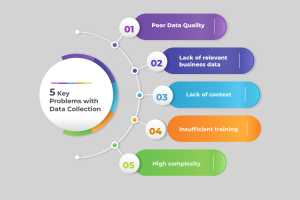Almost every enterprise today is striving to develop brand solutions that are creative and inviting, so they can drive more value and better customer satisfaction levels. This has led to a consistent increase in marketing budgets, with most organisations engaging with channel partners to deliver advanced campaigns and promotions and better target audiences in existing and new markets.
The Role of Marketing in Brands That Are Sold Through Channels
Channel sales make up around 75% of the world’s sales market, enabling companies to sell products through a strong network of resellers, affiliate partners, distributors, independent retailers, dealers, agents, and consultants.
Although channel sales may not work for every company, brands that do rely on it are known to enjoy many benefits, such as enhanced reach, affordable distribution, better growth paths, and optimised costs. When done right, channel sales can also increase revenue growth efficiency, enhance trust through product endorsement and local support, and give customers access to product bonuses.
For brands that are sold through channels, marketing plays a massive role in boosting sales. By being more informative of the market and curating pricing and promotions based on current trends and customer needs, channel marketing empowers brands to:
- Reach audiences they otherwise might not have access to
- Spend less time selling products and more time strengthening core aptitude
- Capitalise on existing distribution networks to broaden market expansion
- Take advantage of channel partner creditability to drive more sales
- Maintain a mutually beneficial relationship with channel partners
- Work together on the same goals of growing sales and increasing revenue
- Reduce delivery costs and improve efficiency
- Build, innovate and grow their businesses
- Get useful information and insight from partners on improving the quality of products
The Challenges in Understanding the Impact of Marketing
The benefits channel marketing provides are indisputable. But many brands have an extremely tough time understanding the impact and ROI of their marketing efforts. As marketing budgets increase YoY, the pressure from CEOs and boards to measure ROI increases substantially.
Although the impact of channel marketing on the overall business might be easy to demonstrate in theory, most brands find it difficult – if not impossible – to quantify the business results and measurable returns that marketing investments produce.
But why do most marketing teams fail to calculate the value and ROI they bring to the organisations? Here are a few reasons:
- The complexity of calculating returns, given the channels, partners, and resources that support marketing efforts
- Collecting, aggregating, and analysing data from a broad and highly disperseddistribution network
- Absence of the right tools and systems to unearth tangible metrics from marketing spend
- Lack of the right accounting, finance, and analytical skillset to quantify returns from marketing investments
- An inability to understand the impact of hundreds of online and offline touchpoints across the marketing mix and along the sales funnel
- No knowledge or know-how on the tools and strategies to use to calculate marketing ROI
- A strong focus on immediate, short-term results such as click-through rates, impressions, and likes and shares and not on long-term sustainable outcomes like brand awareness, customer retention rate, or customer lifetime value
- Use of the wrong attribution models, which tend to generate skewed ROI measurements
Factors to Keep in Mind
Solving the marketing ROI challenge, although difficult, is not impossible. If you want to successfully and constantly unearth metrics across the distributor network and know the ROI of your marketing spend, here are some measures you can take:
- Measure campaign success: One of the better ways to calculate marketing ROI is to measure campaign success. Understanding the impact of each campaign on overall revenue growth can help brands in establishing their baseline, gauging success, and adjusting efforts to maximise impact.
- Include all variable and fixed costs: Another thing to keep in mind to successfully arrive at a marketing ROI is to consider all variable and fixed costs in your calculations. Identify and include all variable costs (including advertising spend and agency costs) and fixed costs (including salaries and technology investments) to arrive at accurate marketing spend figure and then link it with marketing-generated revenue for ROI calculation.
- Link marketing costs with sales growth: Linking your marketing costs with your sales growth can also help you quantify returns from your marketing spend. You can either look at the total revenue generated from a particular campaign, tie in gross profit, or dive deeper to calculate the impact of your marketing efforts on net profit.
- Consider customer lifetime value: The money you invest in marketing also has a great impact on customer lifetime value. So, brand leaders need to make sure to understand the value of each customer relationship and assess long-term ROI across the lifecycle.
- Invest in a marketing analytics platform: Given how complex marketing ROI calculation is, investing in a modern marketing analytics platform is a great way to get all the insight you need into marketing outcomes. The right platform can not only make use of the right attribution models and marketing measurement strategies but also track consumers across the omnichannel landscape — leading to clearer holistic as well as granular ROI measurements.
The Bottom Line
Whenever you launch a new marketing campaign, invest in a new tool, or engage with a new channel partner, there is an associated cost that you have to account for. Although having a sound marketing budget is important to drive sales across different channels, most brands have a tough time calculating marketing ROI because of how complex and complicated the calculations are.
If you want to link profit and revenue growth to your marketing initiatives, you need to use the right tools, consider the right factors, and justify your marketing spend and budget allocation for current and upcoming campaigns and initiatives. Get in touch with us to learn more.




